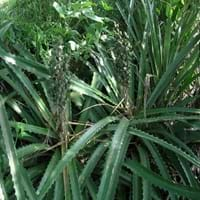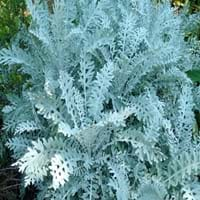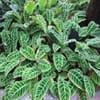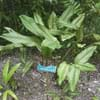Life Span
Annual and Perennial
Annual and Perennial
Type
Tender Perennial
Tender Perennial
Origin
North America, Mexico, Latin America and the Caribbean, Caribbean, Central America, South America
Southern Europe, Mediterranean
Types
Bromelia agavifolia, Bromelia alsodes, Bromelia alta
Silver Lace, Cirrus
Number of Varieties
Not Available
Habitat
Hills, Lowland, Rocky areas, Thickets
Coastal Regions, Warmer regions
USDA Hardiness Zone
Not Available
7-11
AHS Heat Zone
Not Available
12-1
Sunset Zone
Not Available
H1, H2, 8, 9, 10, 11, 12, 13, 14, 15, 16, 17, 18, 19, 20, 21, 22, 23, 24
Habit
Not Available
Cushion/Mound-forming
Flower Color
Not Available
White, Yellow, Purple
Flower Color Modifier
Bicolor
Bicolor
Fruit Color
Not Available
Tan
Leaf Color in Spring
Not Available
Blue Green, Silver
Leaf Color in Summer
Not Available
Blue Green, Silver
Leaf Color in Fall
Not Available
Blue Green, Silver
Leaf Color in Winter
Light Green
Light Green
Leaf Shape
Long Linear
Irregular
Plant Season
Spring, Summer, Fall, Winter
Spring, Summer, Fall, Winter
Sunlight
Not Available
Full Sun
Growth Rate
Not Available
Medium
Type of Soil
Not Available
Clay, Loam, Sand
The pH of Soil
Not Available
Acidic, Neutral, Alkaline
Soil Drainage
Not Available
Well drained
Bloom Time
Not Available
Early Summer, Summer, Late Summer
Repeat Bloomer
Not Available
No
Tolerances
Drought
Drought
Where to Plant?
Container, Ground, Pot
Container, Ground
How to Plant?
Seedlings
Seedlings, Stem Planting
Plant Maintenance
Medium
Medium
Watering Requirements
Average Water Needs, Do Not over Water, Requires regular watering, Water Deeply
Do Not over Water, Never Over-water, Requires regular watering, Requires watering in the growing season, Water Deeply
In Summer
Lots of watering
Lots of watering
In Spring
Moderate
Moderate
In Winter
Average Water
Average Water
Soil pH
Not Available
Acidic, Neutral, Alkaline
Soil Type
Not Available
Clay, Loam, Sand
Soil Drainage Capacity
Not Available
Well drained
Sun Exposure
Not Available
Full Sun
Pruning
Cut or pinch the stems, Remove damaged leaves, Remove dead branches, Remove dead leaves, Remove dead or diseased plant parts, Remove deadheads
Remove dead leaves, Remove deadheads
Fertilizers
Apply N-P-K, fertilize in fall, fertilize in growing season, fertilize in spring
fertilize every 2-3 weeks while growing, Nitrogen, Phosphorous, Potassium
Pests and Diseases
Red blotch
Blight, Downy mildew, Powdery mildew, Red blotch, Rust, White mold
Plant Tolerance
Drought
Drought
Flowers
Yes
Insignificant
Flower Petal Number
Not Available
Single
Showy Fruit
Not Available
No
Edible Fruit
Not Available
No
Fragrant Flower
Not Available
Yes
Fragrant Fruit
Not Available
No
Fragrant Leaf
Not Available
Yes
Fragrant Bark/Stem
Not Available
No
Showy Foliage
Not Available
Yes
Showy Bark
Not Available
No
Foliage Texture
Not Available
Medium
Foliage Sheen
Not Available
Matte
Self-Sowing
Not Available
Yes
Attracts
Butterflies
Flying insects, Insects
Allergy
Scratches, Skin cuts
Avoid during Pregnancy, Skin irritation, Skin rash, Toxic
Aesthetic Uses
Showy Purposes
Showy Purposes
Beauty Benefits
Skin Problems
No Beauty Benefits
Environmental Uses
Air purification
Air purification, Food for insects, Prevent Soil Erosion
Medicinal Uses
Not Available
Headache, Menstrual Disorders, Migraines
Part of Plant Used
Fruits, Leaves
Leaves
Other Uses
Cordage, ropes, Fibre
Employed in herbal medicine, Showy Purposes, Used as Ornamental plant, Used for its medicinal properties
Used As Indoor Plant
Insignificant
Yes
Used As Outdoor Plant
Yes
Yes
Garden Design
Not Available
Bedding Plant, Container, Cutflower, Edging, Mixed Border, Rock Garden / Wall
Botanical Name
BROMELIA pinguin
CENTAUREA cineraria
Common Name
Heart-of-Flame, Maya, Pinuela
Silver dust
In Hindi
bromelia pinguin plant
डस्टी मिलर
In German
Bromelia Pinguin -Anlage
Dusty Miller
In French
plante Bromelia Pinguin
Dusty Miller
In Spanish
planta Bromelia Pinguin
Dusty Miller
In Greek
φυτό Bromelia Pinguin
Dusty Miller
In Portuguese
planta Caraguatá
Dusty Miller
In Polish
Bromelia Pinguin roślin
Dusty Miller
In Latin
Commelina pinguin herba
Dusty Cicero
Phylum
Magnoliophyta
Anthophyta
Class
Liliopsida
Magnoliopsida
Order
Bromeliales
Asterales
Family
Bromeliaceae
Asteraceae
Clade
Angiosperms, Commelinids, Monocots
Angiosperms, Asterids, Eudicots
Tribe
Not Available
Cynareae
Subfamily
Bromelioideae
Carduoideae
Number of Species
Not Available
Not Available
Season and Care of Bromelia Pinguin and Dusty Miller
Season and care of Bromelia Pinguin and Dusty Miller is important to know. While considering everything about Bromelia Pinguin and Dusty Miller Care, growing season is an essential factor. Bromelia Pinguin season is Spring, Summer, Fall and Winter and Dusty Miller season is Spring, Summer, Fall and Winter. The type of soil for Bromelia Pinguin is Not Available and for Dusty Miller is Clay, Loam, Sand while the PH of soil for Bromelia Pinguin is Not Available and for Dusty Miller is Acidic, Neutral, Alkaline.
Bromelia Pinguin and Dusty Miller Physical Information
Bromelia Pinguin and Dusty Miller physical information is very important for comparison. Bromelia Pinguin height is 100.00 cm and width 2.54 cm whereas Dusty Miller height is 20.30 cm and width 30.50 cm. The color specification of Bromelia Pinguin and Dusty Miller are as follows:
Bromelia Pinguin flower color: Not Available
Bromelia Pinguin leaf color: Not Available
Dusty Miller flower color: White, Yellow and Purple
- Dusty Miller leaf color: Blue Green and Silver
Care of Bromelia Pinguin and Dusty Miller
Care of Bromelia Pinguin and Dusty Miller include pruning, fertilizers, watering etc. Bromelia Pinguin pruning is done Cut or pinch the stems, Remove damaged leaves, Remove dead branches, Remove dead leaves, Remove dead or diseased plant parts and Remove deadheads and Dusty Miller pruning is done Remove dead leaves and Remove deadheads. In summer Bromelia Pinguin needs Lots of watering and in winter, it needs Average Water. Whereas, in summer Dusty Miller needs Lots of watering and in winter, it needs Average Water.





